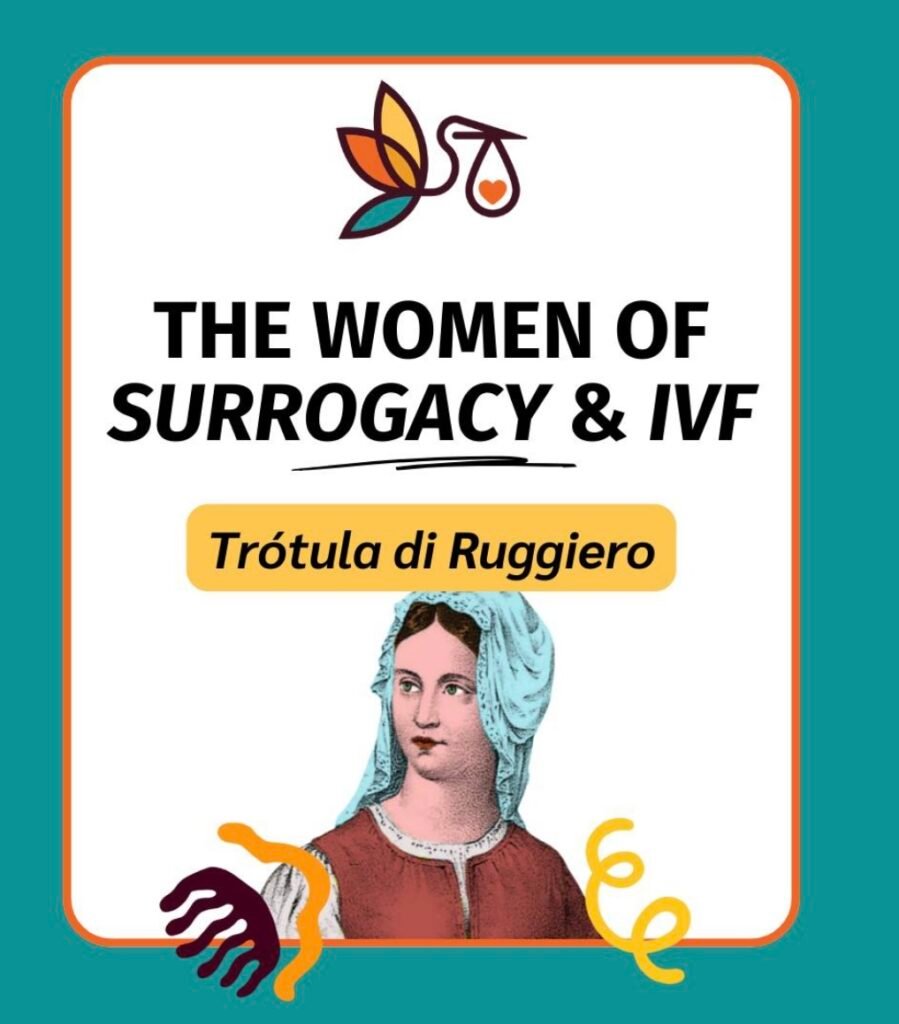
Honoring the Women of Assisted Reproduction Technology
There have been many pioneers in the field of Assisted Reproductive Technology which have led to amazing advances in reproductive medicine, including surrogacy. With their help, the in vitro fertilization (IVF) process has become widely accepted and utilized to assist families have children. This Women’s History Month, we honor a few of the women who made these advances possible.
Trótula di Ruggiero- Middle Ages
Trótula di Ruggiero was a pioneer gynecologist in the Middle Ages. She studied intensively in the area of gynecology and obstetrics and is considered the first person to specialize in these areas. She wrote several treatises, among them the “Passionibus mulierum curandorum” (cure of women’s ailments), which was used as a mandatory text in universities for several centuries. It contained revolutionary ideas for that time, for example, that menstruation was not the origin of all women’s ailments and that fertility problems did not always originate in women, an inconceivable idea up to that time.
Rose Epstein Frisch- 1940’s
Rose Epstein Frisch graduated from Columbia University in 1940 with a degree in zoology, but stopped her research while her three children were growing up to care for them. 17 years after her doctorate, she resumed her scientific life at Harvard. Rose Frisch conducted extensive studies of women, especially athletes and gymnasts, to conclude that a minimum percentage of body fat is necessary for menarche (first menstruation) to be reached and also for regular menstrual cycles to be maintained. The latter play a fundamental role in a woman’s fertility. It took twenty years after the launch of her hypothesis for it to be confirmed with the discovery of leptin in 1994, a hormone produced in fat and involved in the onset of puberty and fertility, among many other things.
Miriam Menkin – 1940’s
Initially rejected from medical school (simply because she was a woman), Miriam Menkin was undeterred from pursuing a career in medicine. She took a job as a researcher for John Rock, who was studying IVF.
In 1944, Menkin was given instructions to wash a sperm sample three times and give it 30 minutes to interact. During one sleepless night with her teething eight-month-old daughter, Menkin only washed the sperm once, and then allowed it to interact for an hour. She subsequently discovered that a fertilized egg had formed as a result, and she and Rock went on to write their revolutionary report, In Vitro Fertilization and Cleavage of Human Ovarian Eggs.
Dr. Helen Gladys Kain- 1940’s
Dr. Helen Gladys Kain, who joined what was then The American Society for the Study of Sterility, is believed to be the first female member of ASRM. She joined in 1946. (3)
Dr. Frances E. Shields- 1950s
Dr. Frances E. Shields was the first female author to appear in Fertility and Sterility and contributed to an article on Artificial Insemination as Related to the Female in May 1950.
Dr. Georgeanna Jones- 1970’s
Dr. Georgeanna Jones spent a lifetime breaking through the “glass ceiling” of medical research and making a mark in reproductive medicine and endocrinology. While still a medical student at Johns Hopkins University School of Medicine, Dr. Jones completed her groundbreaking research, which showed that the pregnancy hormone (now called chorionic gonadotropin) arose from the placenta rather than from the pituitary, as was previously believed. In 1978, the same year that two English physicians performed the first successful in vitro fertilization (IVF), the Joneses were offered the opportunity to create a similar program in the United States. They accepted the offer and moved to Norfolk, Virginia, where they established the now world-renowned Jones Institute for Reproductive Medicine at Eastern Virginia Medical School. Dr. Georgeanna Jones was co-editor-in-chief of The Obstetrical and Gynecological Survey from 1957 to 1989. Some other achievements were the first person to describe the “luteal phase defect” in infertility and was the first person to identify and describe what has come to be called the “ovarian resistance syndrome,” and showed that stimulation of menstruating women with menopausal gonadotropin increased the number of eggs available for in vitro fertilization. (4) She was the first female to serve on the board of directors from 1971 to 1974 and the first female President of ASRM in 1971.(3)
Jean Purdy- 1970’s
Jean Purdy, who worked with Drs. Edwards and Steptoe as a lab technician, was the first person to witness the dividing of embryonic cells that would become Louise Joy Brown, the first human born thanks to IVF. Purdy went on to co-author 26 papers with Steptoe and Edwards. Much in part to her work, 370 children were conceived via IVF during her career. As the world’s first clinical embryologist, she developed critical processes that are still used in IVF treatments today and is finally being recognized as a key figure in the history of reproductive medicine.
Muriel Harris-1970’s
Muriel Harris arranged for the staff to attend egg retrieval procedures and organized a team of volunteer nursing staff to assist Steptoe in his research. Harris proved to be a key player during the IVF discovery process, providing extensive nursing and moral support to the entire team. She is even said to have been the one to acquire much of the medical equipment used by the staff.
Karen Sermon-2000s,
Karen Sermon began an exciting journey into the world of embryonic pre-implantation genetic diagnosis (PGD) in which she is still immersed today after having been the source of numerous breakthroughs. PGD (also called PGTA) is the study of the embryo’s genetic material in the laboratory. With it, we can detect genetic problems in embryos in the laboratory, before pregnancy. She developed PGD to detect embryos that would develop Tay-Sachs disease, a serious hereditary disease that causes neurological damage and early death. From that point on, she continued to work tirelessly on improving the technique and developing PGD for many more monogenic diseases. Her work has been published in the most important scientific journals in genetics and reproduction.
Thanks to Walter E. Duka, MS, and Alan H. DeCherney, MD, who collaboratively published a history of ASRM titled, “From the Beginning.” We pulled a few fun facts about the women in our history from that publication.





